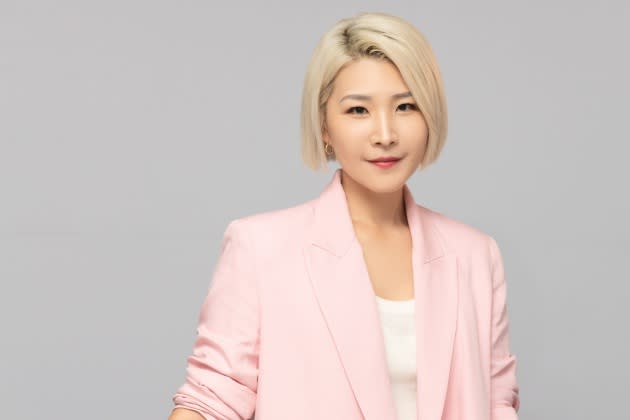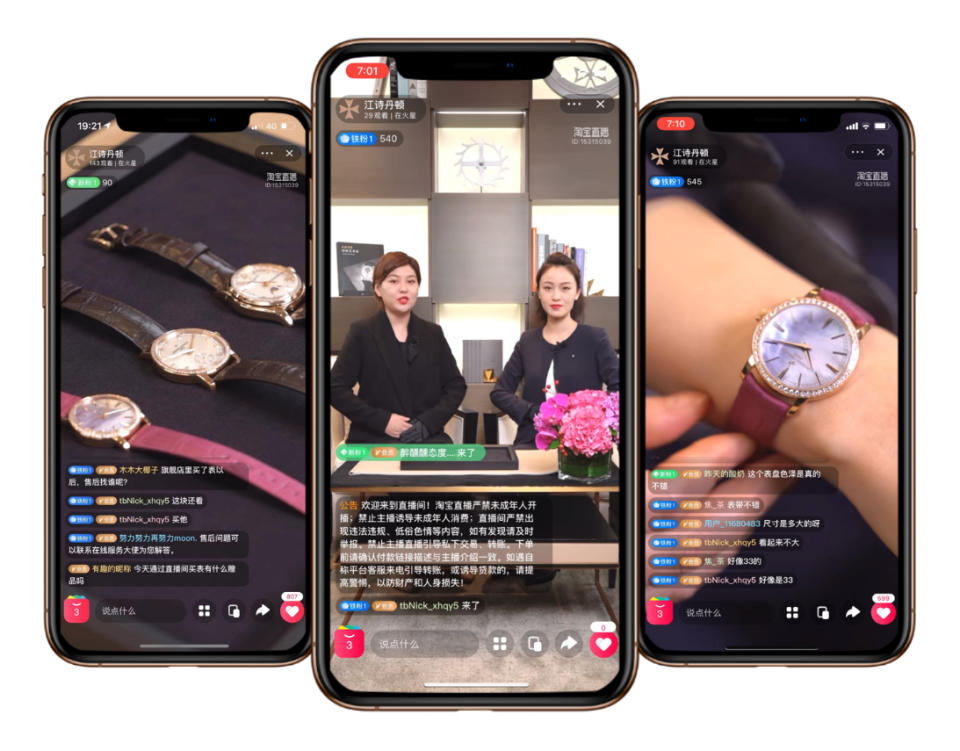Tmall’s Janet Wang on Luxury Prospects in China

PARIS — As Chinese consumer confidence rebounds, online retail giant Tmall Luxury Pavilion is helping partner brands to reach the country’s increasingly young luxury consumers using data mining and new technologies designed to rapidly bring innovation to the market.
Janet Wang, general manager of Tmall Luxury Pavilion and vice president of B2C retail for parent company Alibaba Group, outlined some of the initiatives in a presentation in Paris during her first visit to Europe since the start of the pandemic. In an exclusive interview with WWD, she delved further into how the technology is supporting brands’ omnichannel strategy.
More from WWD
“Customers come to our platform not only with the intention to shop directly, but also more about finding and learning about the brands and the products,” she said. “We help to facilitate the brands to connect with the audience not only just for one single transaction. It’s an ongoing engagement and conversation that happens that can cross different channels.”
After a year marred by another round of lockdowns, the executive was upbeat about prospects for recovery, citing industry forecasts that Chinese luxury spending will increase by 10 percent to 12 percent in 2023.
Wang estimated there are 100 million potential online customers for luxury goods in China, but she declined to provide any revenue figures for Tmall, or elaborate on Alibaba’s announcement last week that it will split its activities into six business units, including an e-commerce branch known as Taobao Tmall Commerce Group.
“We believe with six different business units we’ll unlock greater business potential and also create more agilities,” she demurred.
Despite a spike in visa applications, she does not expect Chinese tourists to return to Western destinations before the end of this year, as they will initially favor places closer to home. Even when they have access to physical stores abroad, brands should remain strongly engaged with Chinese customers online to foster relationships and engagement, she advised.
That involves using a variety of techniques, including short videos, livestreaming and AR try-on apps that appeal to digital natives, she said. “Many of our customers now are below 30 years old and they started purchasing luxury at a much younger age,” Wang noted.
Tmall, which launched in 2017 and now carries 200 premium luxury brands, last year began offering personal video sales appointments with brands including Cartier. For the Watches and Wonders fair in Geneva last week, it created a virtual booth with 3D versions of key launches that drew 100,000 unique visitors a day, she said.
“Very few people have the private access to an event like this,” Wang noted.
As it continues to expand, Tmall has added more homewares brands, such as Baccarat and Christofle; personalization services including digital engraving and audio gift cards, and niche or emerging brands, such as La Bouche Rouge in beauty and Polène in accessories.
WWD: As Chinese travel resumes, how do you expect luxury spending to be spread between overseas and domestic consumption?
Janet Wang: We would not give a specific split forecast, but what we see is that it’s very important that when the brands approach the Chinese market, it’s not only about the Chinese domestic market, it’s the Chinese customers that, no matter where they shop, in China or outside of China, they need to really build the connections to.
That’s why I told the brand partners that it’s not only about the wallet share that is being coveted within China — it’s really the mind share of your brands against competitors, against even a different lifestyle.
In the end, it really doesn’t matter whether they travel in China or outside of China.

WWD: One of the functionalities you offer are personalized online appointments. How scalable is that?
J.W.: Chinese consumers are known for extreme digital savvy but also want everything quicker, so on average, each of the video consultations lasts around 15 to 20 minutes. And then it’s not like you make the appointment and you go in asking, “OK, I want to see these two, three products.” All the products you want to view are already pre-selected through the reservation interface.
Prior to that video consultation, usually there is already a text conversation that has happened, so the service agent also through the previous historical chats in texts knows [that] this customer has interest in certain models, or even [that] this customer wants to know whether these colors will match her skin tone.
So it’s very intimate, very personal, but also at the same time very efficient.
WWD: How many of these consultations are you able to offer per month?
J.W.: We have already launched with 10 different brands and the numbers are growing.
Some of them have 10 agents, and then imagine a 15- to 20-minute time slot; a lot of time slots can be available throughout the day. And then it runs in very long hours from the morning to late evening. Again, that’s how spoiled, we sometimes joke, and how lucky Chinese customers are, because after a long day at work, when they get home at 8.30 p.m., they can still schedule appointments online and get their video consultation.
WWD: What is the conversion rate for these online appointments?
J.W.: It’s three times higher than the average customer service chat with text, and then the average order value, the ticket size, is also of course higher. I gave the example of Cartier, but in fact, many of the fashion maisons use this new video service. So with fashion, they were able to do a lot of styling recommendations, so you upsell with more units.
WWD: Are all the sales agents based at your headquarters in Hangzhou?
J.W.: They’re provided by the brands.
The brand representatives need to speak truly of the brand DNA, knowing the products really well, so we just create these technologies to facilitate the connection between brands and customers.
WWD: Is live selling also a big part of the platform?
J.W.: It is. Livestream selling has been very popular for three to five years.
Usually it’s better utilized at key marketing and commercial moments. For example, when brands have big offline events, or when they have a big campaign happen in China, then they integrate a livestreaming format, but then broadcast to a very wide audience base versus the one-on-one that we developed last year. So we have both tools, and brands can combine them for different purposes. Both work really well. We did livestreaming sales for Watches and Wonders’ Shanghai [edition] in 2021. It was a great result [in terms] of combining awareness of high-end watches and sales.
WWD: Young customers in China have access to greater disposable income than elsewhere. Why is that?
J.W.: This is a worldwide phenomenon. Based on a Bain report, customers now have their first access to luxury at a much younger age, and they will become even younger. Now it’s around 18 versus before, it was 20. And later, it will probably become 13 versus 15.
In China, in particular, this younger generation has grown up in a very rapid-growth economic period of China’s recent history, and then with the one-child policy, they tend to have much more access to different resources, not only disposable income, but also education and the sophistication of learning different cultures too. So that’s why they have very quickly grown an appetite, and then they’re very, very, very interested in learning quickly about each of the brand’s strengths, their heritage and the bestselling points of the brand. So that’s why, once they learn, they are very intrigued and then they want to purchase it as self-identity expressions. China, even with the one-child policy, has a huge population, so also younger customers tend to, in a way, embrace luxury to stand out.
WWD: Are you seeing any specific trends among those younger customers?
J.W.: They were born as digital natives and they want everything to be accessible at their fingertips. That’s why a lot of these very innovative formats that probably look very new to the rest of the world seem very natural to this audience. And then they think that if the press has access to Watches and Wonders in Geneva, they want to have the same privilege or same experience at the same time. That’s why we burned the midnight oil. Before we took the plane to Geneva, our team worked with the maisons in advance to prepare all these 3D models, to create a whole booth.
They are very adaptable to, for example, the emerging home decorations with the tableware, with the homewares — very expensive items, but then they think that’s how they also want to embrace the culture.
And lastly, in particular in the last two, three years in China, the outdoor trend has picked up very quickly, so that’s a very interesting trend. You will see young Chinese customers all doing skateboarding but at the same time wearing very cool jewelry, very beautiful luxury sneakers, too, so they have these very hybrid, very adaptable lifestyles that are combined together.
WWD: What are the big strategic priorities for Tmall this year?
J.W.: First, we want to work with our brand partners to really understand through our data intelligence how Chinese consumers behave, how they respond to certain brand campaigns, to your products, even to the trends so that the brands can develop and adapt the strategies to be more relevant to the Chinese market. In general, the Chinese market means Chinese customers all over.
We also work with them to guide them on how to really utilize the data to formalize their strategies.
The second is to continue innovating on events and storytelling formats [straddling] both online and offline, because I say that we are part of the brands’ 360-degree communications. We’re part of a very important consumer journey, but the journey doesn’t just stop online. Consumers, when they are physically offline, they also want to have access to online, doing research or comparing to other products or getting to know what other shoppers think about that brand.
Best of WWD


